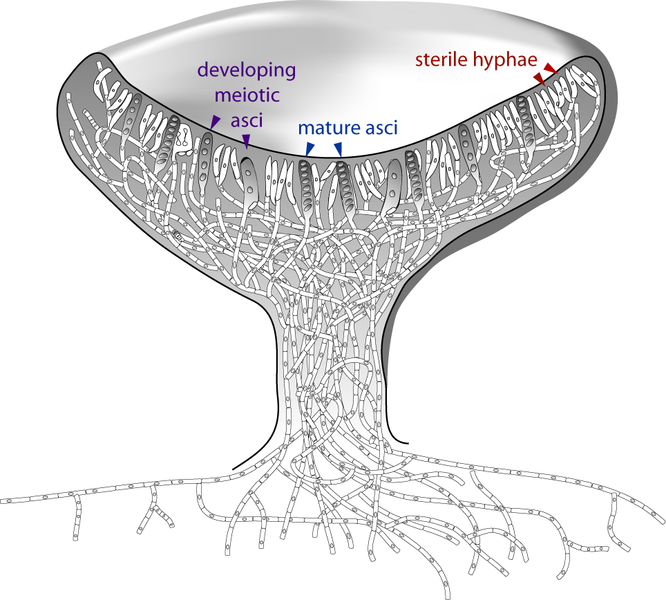Reproduction: The Orange Peel Fungus Way...
Aleuria aurantia exhibits both sexual and asexual reproduction. In the Orange Peel Fungus, the entire sexual reproductive process takes place within the asci.
Sexual Reproduction
To initiate the reproductive cycle in the Orange Peel Fungus, mitosis originally occurs in the hyphae, which leads to the development of the asci. Because components of the ascocarp are male (antheridia) or female (ascogonium), nuclei from these types of cells can fuse together when hyphae of the two cell types come into contact; this process is known as karyogamy. After the fusion of the two nuclei, meiosis, or the sexual part of the cycle, occurs. This results in the formation of four haploid (1N) ascospores. A final round of mitosis then finishes off this process, and eight (haploid) ascospores are the result. Such ascospores are highly resiliant, and, when they are released into the environment, they may generate a new (haploid) organism.

Asexual Reproduction
The asexual mode of reproduction in the Orange Peel Fungus occurs in conidiophores, which are structures that generate conidia. Conidia are haploid spores, and they are released into the environment in large quantities when conditions are appropriate.
It must be noted that there are various advantages and disadvantages to both sexual and asexual reproduction. Because sexual reproduction in the Orange Peel Fungus forms tough ascospores, there is a greater chance that these spores will germinate and grow into a new organism. Asexual reproduction, on the other hand, produces many more spores, or conidia; however, these spores are less resilient than the ascospores. The mode of reproduction used by an Orange Peel Fungus is almost always determined by its specific habitat.
Home